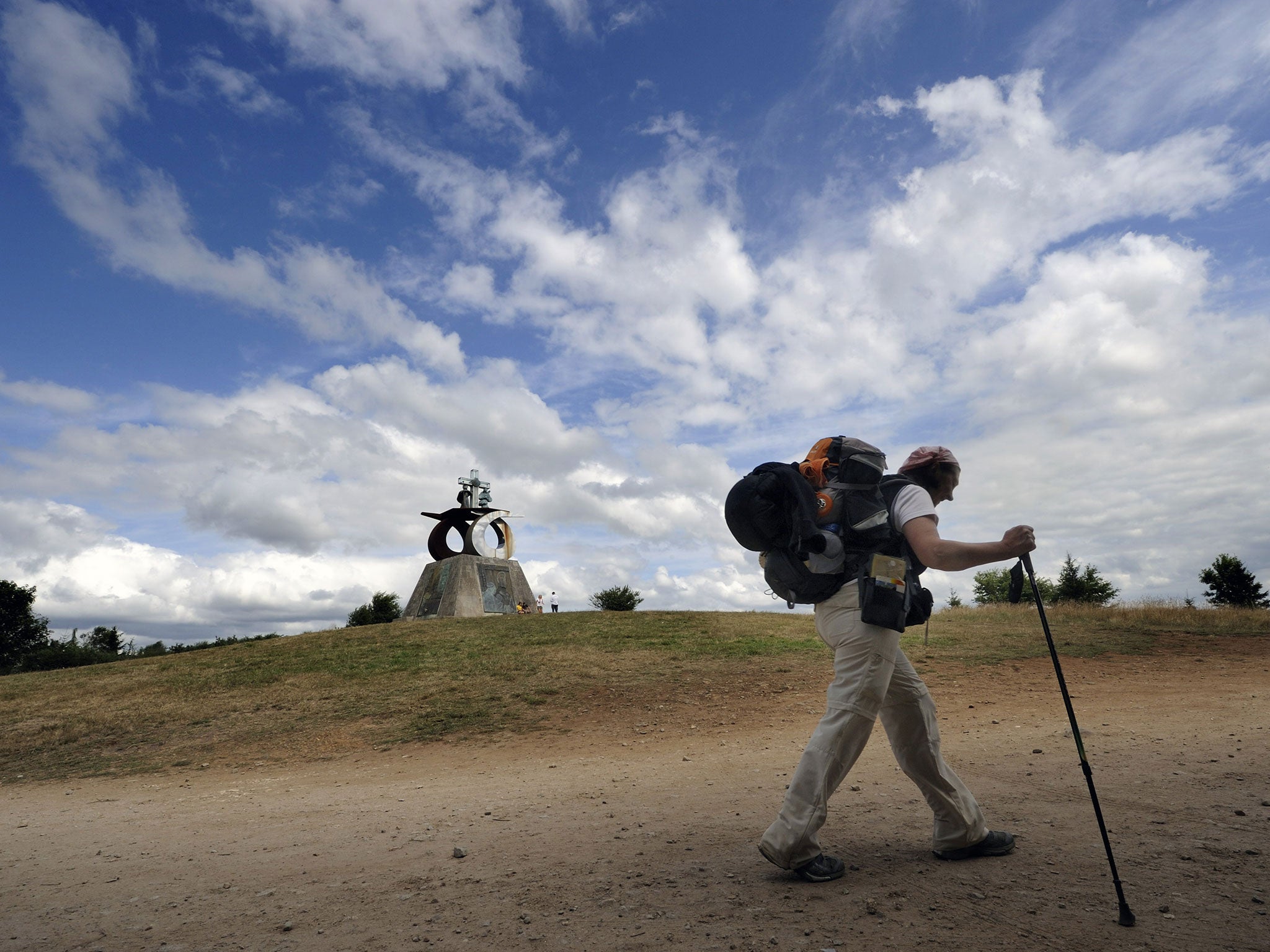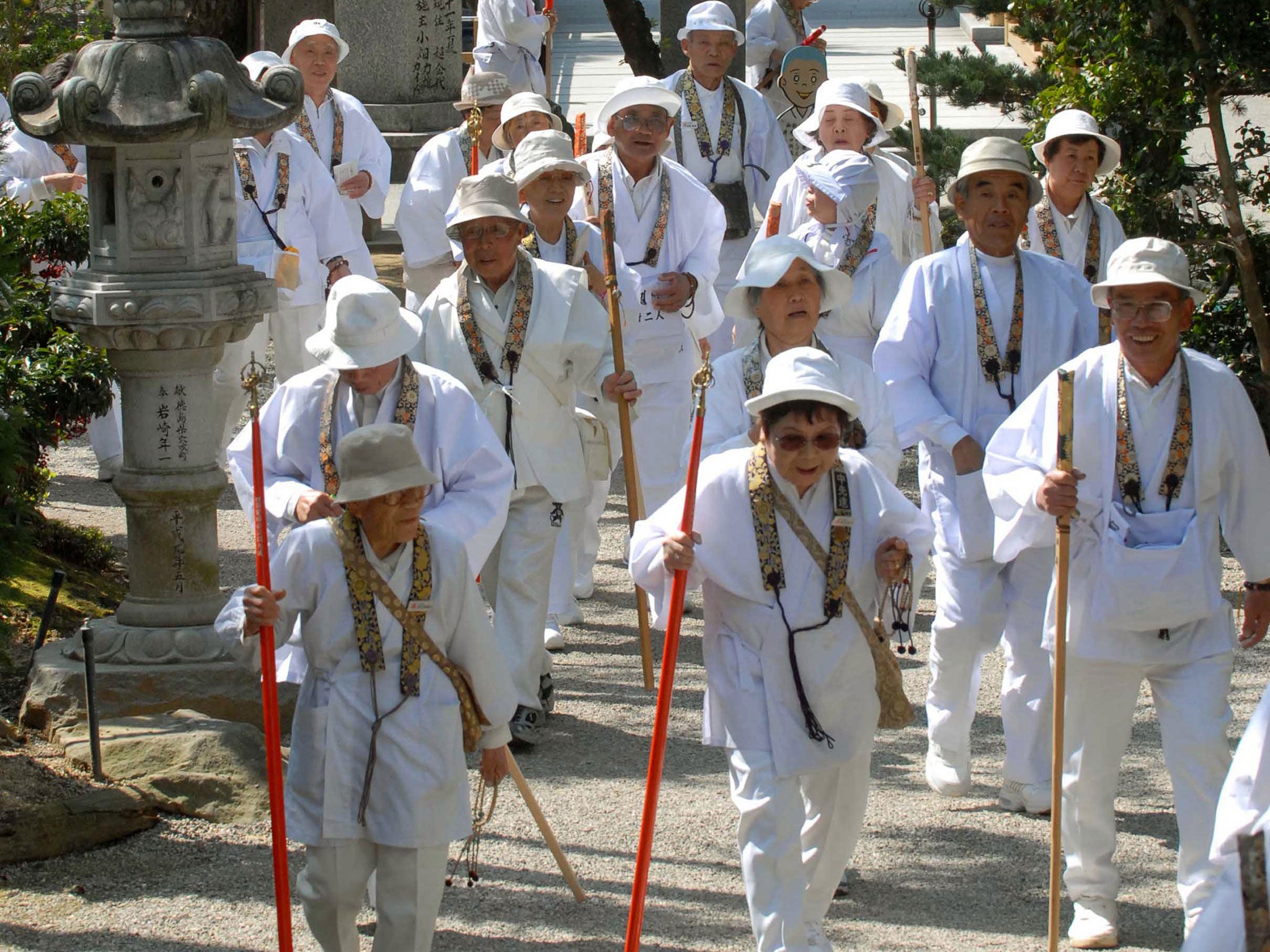Japan hopes to follow Camino de Santiago's path to marketing success with 750-mile Buddhist pilgrimage
The Japanese believe the Way of the 88 Temples can flourish as a tourist enterprise in the same way as the Camino

Your support helps us to tell the story
From reproductive rights to climate change to Big Tech, The Independent is on the ground when the story is developing. Whether it's investigating the financials of Elon Musk's pro-Trump PAC or producing our latest documentary, 'The A Word', which shines a light on the American women fighting for reproductive rights, we know how important it is to parse out the facts from the messaging.
At such a critical moment in US history, we need reporters on the ground. Your donation allows us to keep sending journalists to speak to both sides of the story.
The Independent is trusted by Americans across the entire political spectrum. And unlike many other quality news outlets, we choose not to lock Americans out of our reporting and analysis with paywalls. We believe quality journalism should be available to everyone, paid for by those who can afford it.
Your support makes all the difference.For centuries, religious pilgrims, and latterly thrill-seekers and those wanting to “find themselves”, have undertaken a month-long trek across northern Spain, along the Camino de Santiago.
Few, if any, of the 200,000 or so people who complete the walk each year will realise that it is now being used as a blueprint to market and promote others around the world. The latest is Japan, which is hoping to use the popularity of the Camino to sell its own pilgrimage, the Way of the 88 Temples, a 750-mile path through the island of Shikoku’s Buddhist past.
Both walks have their roots in religious experience. The Camino de Santiago, or Way of St James, actually covers several routes through northern Spain, which eventually lead to the magnificent cathedral at Santiago de Compostela. The cathedral is the supposed resting place of James the Apostle, whose remains were said to have been brought to Spain and interred in a crypt after he was beheaded in Jerusalem in AD44.
What will interest the Japanese tourist authorities more than the legend of St James, however, is the success that their counterparts in Spain have had at marketing the Camino. The city of Santiago is taken over by walking shops and souvenir outlets selling T-shirts and furry toys linked to the Camino; the hotels and hostels do a roaring trade.
Back in the 1980s, however, no more than a trickle of people travelled to Spain for the walk. In the Middle Ages, it was a well-travelled route but, over the centuries, the black death, the Protestant reformation, wars in Europe and the Spanish dictatorship, meant that the popularity of the Camino fell in decline.
The Camino de Santiago vs the Way of the 88 Temples
Distance
- The Camino: 478 miles (along the most popular route, the French way)
- The Way of the 88 Temples: 750 miles
Religious Significance
- The Camino: a Catholic pilgrimage that ends at the cathedral in Santiago de Compostela, the supposed final resting place of James the Apostle
- The Way of the 88 Temples: a Buddhist tradition. The walk was supposedly completed by the famous Buddhist monk Kukai
Number of pilgrims each year
- The Camino: approximately 200,000
- The Way of the 88 Temples: about 500,000, mainly Japanese
The clothes
- The Camino: modern hiking gear. Waterproofs are especially important
- The Way of the 88 Temples: white shirts and sedge hats
Time needed to complete
- The Camino: about a month
- The Way of the 88 Temples: about a month
Alternative modes of transport
- The Camino: bikes, and now the Spanish state railway company offers a luxury train journey as an alternative
- The Way of the 88 Temples: Some pilgrims give up on the walking and take a taxi
Concerned that the walk would be lost for ever, the authorities in Galicia, the north-western Spanish region that is home to Santiago de Compostela, began a campaign to reinvigorate the Camino.
The vast majority of those who complete the Camino these days are foreigners. It was recognised as a “European cultural route” in 1987 and later was named a Unesco world heritage site.
The turnaround has been an obvious success and it is this that the Japanese want to tap in to. Alberto Núñez Feijóo, the head of the Galician government, and his counterpart from Japan’s Kagawa province, an area on Shikoku island, held a meeting in November and agreed to work together to promote the Japanese pilgrimage. Almost half a million Japanese tourists visit Spain each year.
The ultimate goal, according to the Japanese, is to have the Way of the 88 Temples “recognised as a world heritage site, based on learning from the long and abundant experience that the Camino de Santiago possesses”.

It would seem that they are already en route to achieving that goal. The Shikoku trek already has a number its own customs and traditions: many of the walkers wear white clothes, topped off with sedge hats. That said, if the Camino is at least in part a test of human stamina, many of those who complete the Japanese trail today use cars, bikes or even taxis. About half a million pilgrims walk the circular Japanese route each year, but the vast majority are Japanese.
Traditionally, pilgrims complete the walk in a clockwise direction, but it has recently been considered good luck to complete the route the other way round.
Join our commenting forum
Join thought-provoking conversations, follow other Independent readers and see their replies
Comments